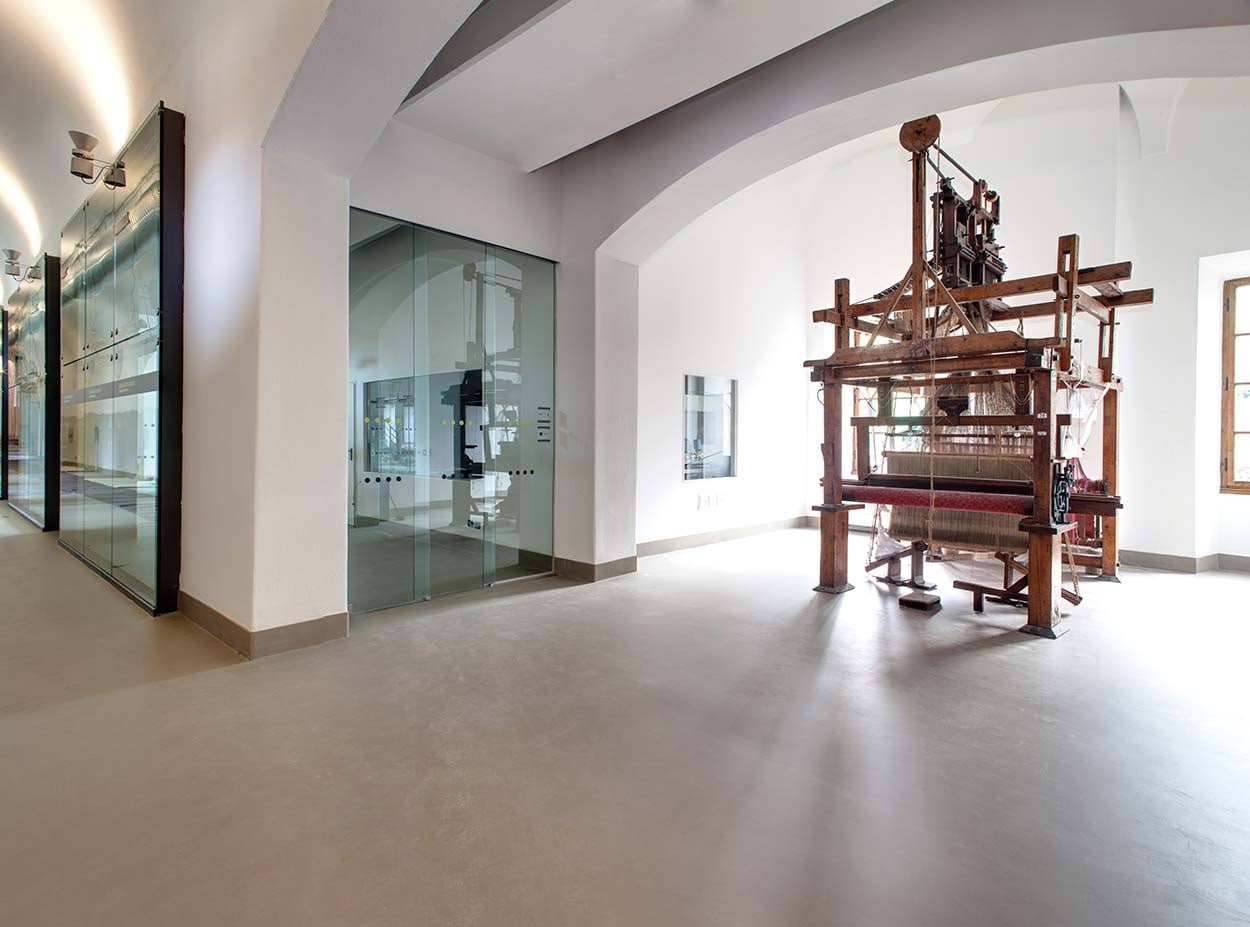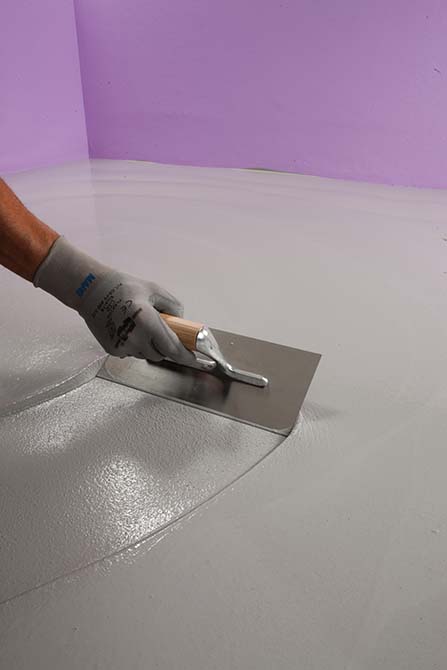
Ultratop: versatility and resistance
From industrial settings to museums: functional flooring in line with the latest trends in contemporary design - interview to the architect Giovanna Novella of Mapei Spa.
From industrial settings to museums: functional flooring in line with the latest trends in contemporary design - interview to the architect Giovanna Novella of Mapei Spa.
Ultratop, the key product in the Ultratop System, is a rapid-setting and hardening, self-levelling mortar available in 6 different colours (light grey, white, beige, red, anthracite and standard). It is easy to apply with either hand tools or a pump and is used to form abrasion-resistant floor coatings between 5 and 40 mm thick. It is suitable for use in a wide variety of settings, which demonstrate the enormous versatility of this product. In this article we talk about Ultratop in more detail with the architect Giovanna Novella from Mapei, Mapei Technical Service for the Resin Flooring Line.
Ultratop was originally developed as a coating product for industrial settings where functionality is a key requirement. Which of its strong points encourage a client to choose this product as a coating in operational areas?
Amongst the key features of the product are undoubtedly its application speed and rapid hardening properties. We all know how important it is to limit down times in production facilities as much as possible when carrying out maintenance work due to economic reasons. Thanks to the very rapid hardening properties of the mortar (which sets to foot traffic within a few hours of application), down times can be really short, an enormous advantage from an economic point of view.
Another characteristic that encourages the use of ULTRATOP in industrial settings is its very high resistance to abrasion. In fact, flooring made from ULTRATOP is highly suited in areas where wheeled vehicles are used frequently, such as logistics hubs, production areas, warehouses and production facilities in general.
Over the years, ULTRATOP has also been proposed as a coating product to create decorative floors in civil settings, such as homes, showrooms and shops. Which trends in the market seem to confirm this choice in design?
In the last few years there really has been a clear increase in the use of ULTRATOP in all types of surroundings: from residential settings, which have more of a minimalistic look, to commercial surroundings and shops, especially retail chains, where the very nature of the material, its functionality and, at the same time, the various textures available with ULTRATOP, makes it a choice completely in line with contemporary design solutions, while at the same time maintaining the characteristics and performance properties of a very high quality product in terms of resistance and durability over the years.
Since it was originally developed, ULTRATOP mortar has formed the base for more specific products, such as ULTRATOP LIVING and ULTRATOP LOFT. How do these systems differ from their “progenitor”?
ULTRATOP, the “progenitor” of these systems, was originally formulated and offered specifically as a repair mortar for floors in industrial surroundings because of its good mechanical properties and high resistance to abrasion. ULTRATOP LIVING, on the other hand, also has excellent mechanical properties, but is more suitable for use in residential and commercial settings where attention to detail is particularly important for the end user. And lastly ULTRATOP LOFT, which is no longer a self-levelling mortar, but rather a trowellable paste that can be applied on vertical surfaces, has made quite an impact in residential settings for its connotation as a vital material for contemporary interior design: an innovative proposal in which colours, shades and various aesthetic effects guarantee the maximum reliability when creating seamless surfaces.
The ULTRATOP system has different uses according to the effect chosen: “natural”, “polished” or “Terrazzo alla Veneziana”. What kinds of surroundings would you recommend them for and how do they differ from each other?
This material is so versatile that it can be applied anywhere, in practically every type of setting we use on a daily basis. Over the last decade we have noticed that the “natural” effect version of ULTRATOP can be found in settings that go from mainly industrial to commercial and retail, and it has even been used in homes in more intimate, private and personal spaces. Presumably its use in such a vast array of settings may be explained by it being identified as a very high quality product and, at the same time, as a material with a natural, minimalistic and absolutely materic finish. The “polished” effect, as with the “Terrazzo alla Veneziana” effect, on the other hand, is an alternative to the traditional and more widely used “natural” effect. The polishing procedure for both versions basically changes the final finish compared with traditional ULTRATOP (in fact, you could say that it is as if Ultratop has had a “change of clothes”….) and you obtain surfaces which are smooth and shiny that reflect the light. Going into detail, the “polished” effect brings out a kind of “salt and pepper” look, caused by the aggregates contained in the product, while “Terrazzo alla Veneziana” floorings show the presence of polished natural aggregates (usually marble, granite or natural stone), amalgamated with ULTRATOP which, in this case, acts as a binder. The rapid curing cycle of ULTRATOP mortar, along with standardisation of the polishing process, makes this system a highly advantageous alternative to traditional “Terrazzo alla Veneziana” flooring with considerably shorter installation times and obvious and significant economic benefits.
If we look at “polished” and “Terrazzo alla veneziana” floorings made with ULTRATOP from a strictly decorative point of view, I would say their area of use would normally be within residential and commercial settings, such as apartments, shops, showrooms, churches, hotel lobbies, museums, supermarkets, etc.
Can the ULTRATOP solution only be adopted in new builds or may it also be applied in existing buildings?
ULTRATOP flooring may be applied in both new and existing buildings, as long as the substrate is in good condition and guarantees the minimum mechanical requirements for this type of flooring, such as stability (which means no movement), residual moisture content (when applied on floors), compressive and flexural strength, compactness, etc. When installing flooring on new substrates, such as cementitious screeds, the state of curing must be carefully checked to rule out the possibility of movement caused by hygrometric shrinkage. For installations on existing flooring, on the other hand, the quality of the surface must be thoroughly checked, and when installing this system on ceramic floors, for example, the quality of the ceramic tiles must be checked and they must be soundly bonded to the substrate. It is fundamental that all the above points are checked correctly and accurately to guarantee good results from the finished flooring.
ULTRATOP and ULTRATOP LOF cementitious floorings have been applied successfully in two famous museums, and precisely in the Leonardo da Vinci Museum of Science and Technology in Milan and the Innocenti Museum in Florence. An innovative choice with the ability to blend in with an historic building. Would you agree?
Absolutely, I fully agree! The choice to use ULTRATOP flooring in these kinds of settings certainly helps to emphasise the idea of continuity inside structures with such historic/artistic characteristics. In fact, in both the Museum of Science and Tecnology and the Innocenti Museum, once the ULTRATOP flooring had been installed, there was more sense of harmony; they became more orderly, silent and neater and, while wandering through the display areas, visitors notice a pronounced sensation of reassurance. What is more, the materiality of the surface of the floors is not perceived as an element that separates or as a stand-alone component of the museums; it is identified as stylistic continuity of their original structures.
A number of years have gone by since the flooring was installed in both museums and, from time to time, I find myself telling people about the advantages and properties of these floorings.
So I would invite everybody to see them for themselves and check their condition personally so they can see that, when we talk about ULTRATOP, we are talking about a formulate with extremely high mechanical properties, functionality and durability over the years, with the ability to show off all of its eclecticism and versatility, and how it continues to meet the requirements of the market with great design solutions.











